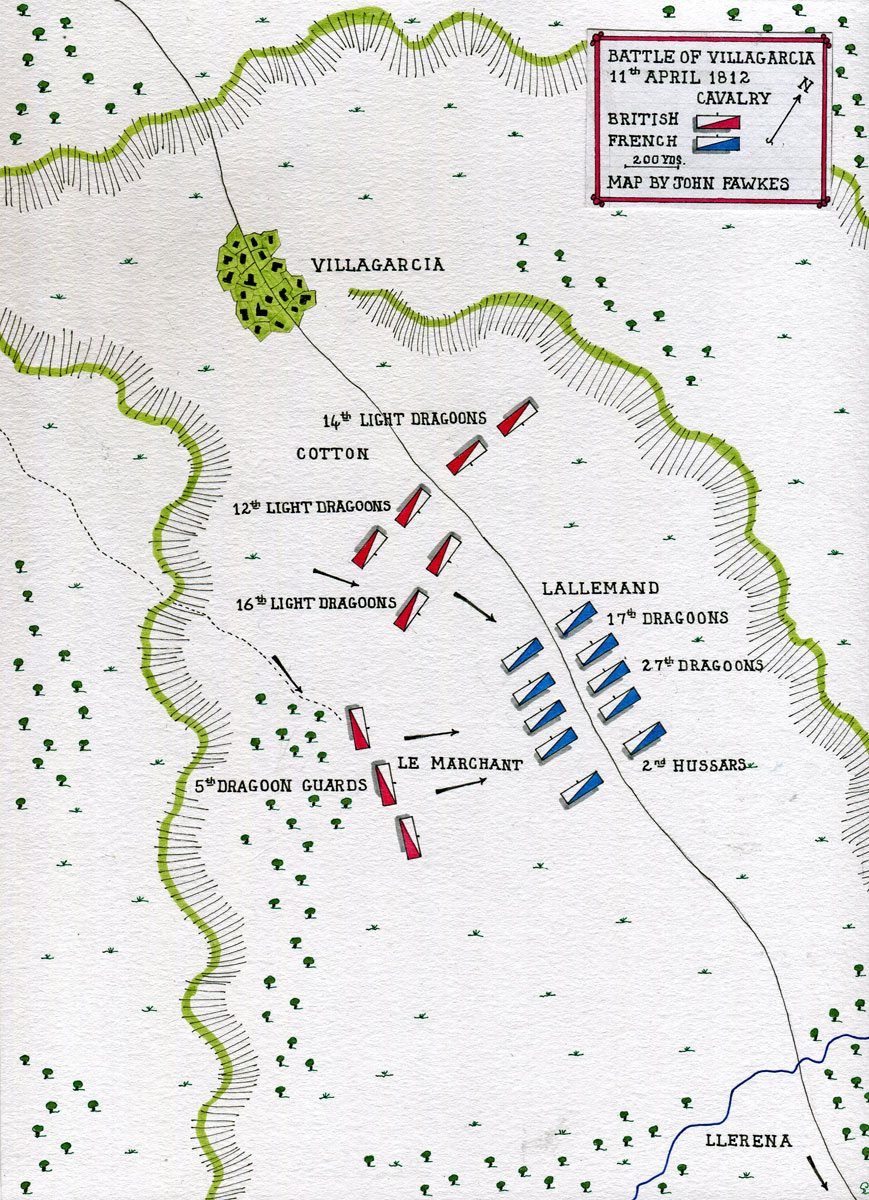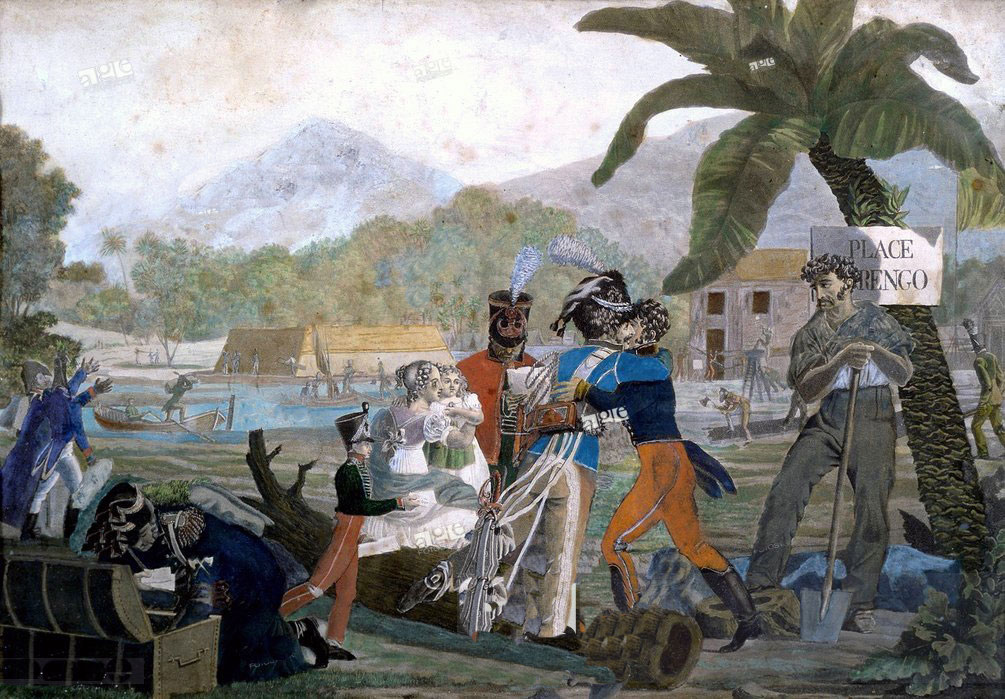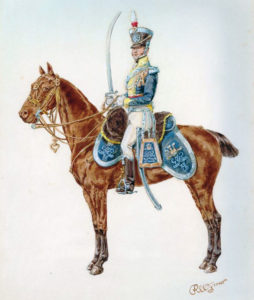The successful cavalry action against the French on 11th April 1812 in the Peninsular War
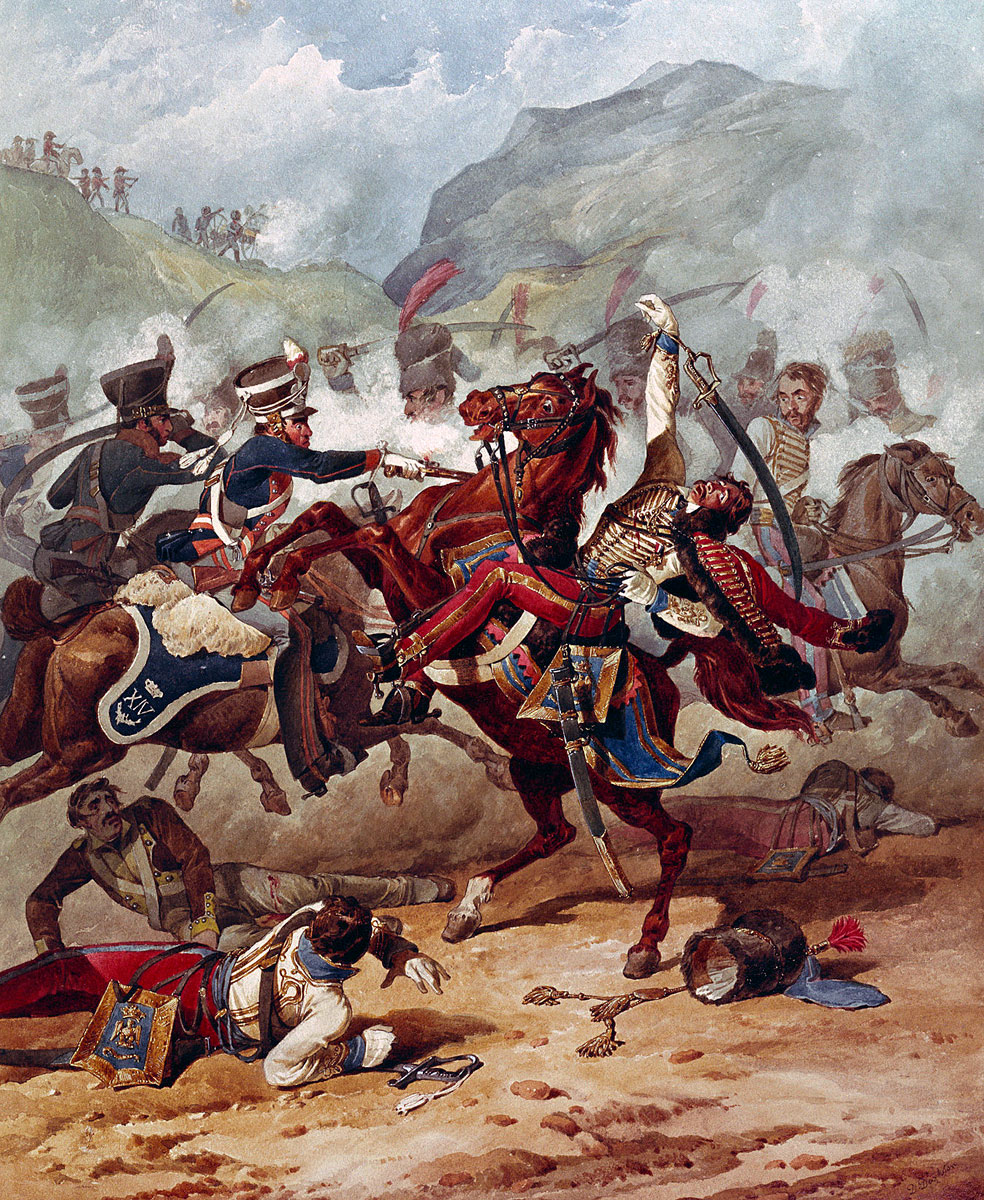
14th Light Dragoons attacking French Hussars: Battle of Villagarcia on 11th April 1812 in the Peninsular War: picture by Denis Dighton
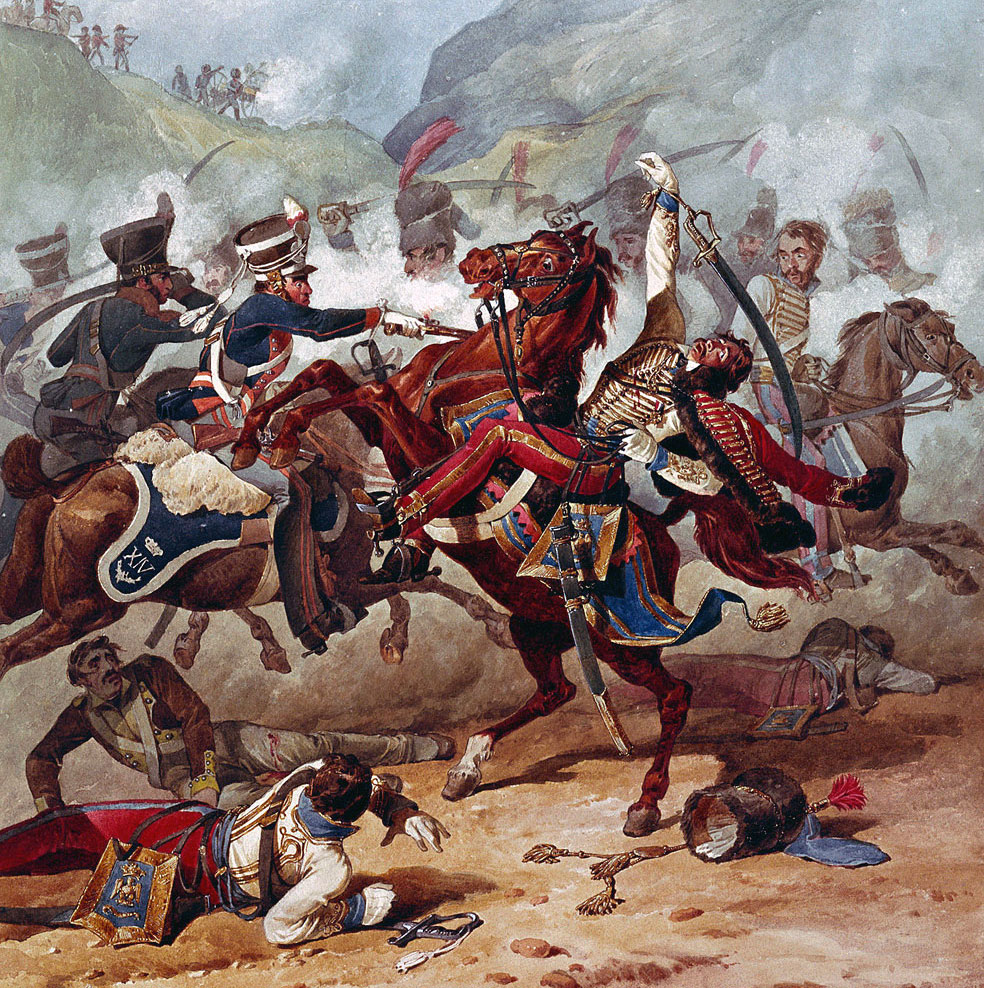 30. Podcast of the Battle of Villagarcia The successful cavalry action fought by the British against the French on 11th April 1812 during the Peninsular War: John Mackenzie’s britishbattles.com
30. Podcast of the Battle of Villagarcia The successful cavalry action fought by the British against the French on 11th April 1812 during the Peninsular War: John Mackenzie’s britishbattles.com
The previous battle in the Peninsular War is the Storming of Badajoz
The next battle in the Peninsular War is the Battle of Almaraz
Battle: Villagarcia
War: Peninsular War
Date of the Battle of Villagarcia: 11th April 1812
Place of the Battle of Villagarcia: In South-Western Spain, to the south-east of Badajoz, on the road to Cordoba.
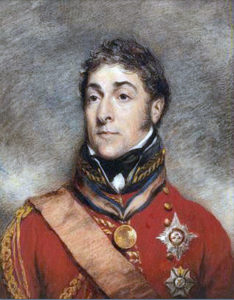
General Sir Stapleton Cotton, commanding the British Cavalry Division at the Battle of Villagarcia on 11th April 1812 in the Peninsular War
Combatants at the Battle of Villagarcia: British cavalry against French cavalry.
Commanders at the Battle of Villagarcia: The commander of the British cavalry division was General Sir Stapleton Cotton, later Lord Combermere.
The commander of the French force was General Lallemand
Size of the armies at the Battle of Villagarcia: Around 1,200 men on each side.
Uniforms, arms and equipment at the Battle of Villagarcia:
1812 was the year that saw a fundamental change in British cavalry uniforms.
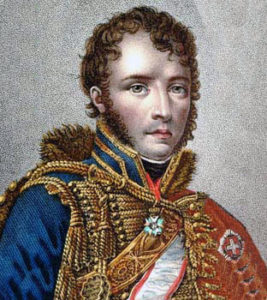
General Charles Lallemand, commanding the French Cavalry at the Battle of Villagarcia on 11th April 1812 in the Peninsular War
Prior to 1812, British light cavalry wore light blue tunics with characteristic leather helmets covered by a bearskin crest and British heavy cavalry wore scarlet coats with ‘side to side’ black bicorne hats.
In the 1812 changes, British light dragoons adopted French-style shakos.
British heavy cavalry (dragoon guards and dragoons) wore red jackets and black fore and aft cocked hats. The change in uniform brought in during 1812 saw the British heavy cavalry adopt ‘Roman’ style helmets with horse hair plumes.
The French cavalry comprised Cuirassier Regiments, none of which fought in the Peninsula, Dragoons, largely in green with crested helmets, Hussars, in the conventional uniform worn by this arm across Europe and Chasseurs à Cheval, dressed as hussars.
Both British and French cavalry were armed with a sword, muzzle loading flint lock carbine and pistols.
The French cavalry were more inclined to use carbine and pistol fire from the saddle at the halt than the British cavalry. On a number of occasions this practice brought disaster upon the French cavalry, thereby receiving a charge at the halt, an often fatal practice for cavalry.
The problem in establishing what the British cavalry regiments wore at the Battle of Villagarcia, as with all the battles of 1812, is that it is unclear when each regiment abandoned the old style of uniform and adopted the new.

Officer of 5th Dragoon Guards: Battle of Villagarcia on 11th April 1812 in the Peninsular War:picture by Richard Simkin
The change required the new uniforms to be made available in the Peninsular and each regiment to have the opportunity to collect the uniforms from the advanced depots.
Of the various artists who illustrated regiments in the Peninsular in 1812, some show the old uniforms and headgear and some the new.
Winner of the Battle of Villagarcia:
General Cotton’s British First Cavalry Division defeated the French cavalry.
Orders of Battle at the Battle of Villagarcia:
The British First Cavalry Division: Major General Sir Stapleton Cotton
Heavy Cavalry Brigade: Major General Slade
1st Royal Dragoons
3rd Dragoon Guards
4th Dragoon Guards
Heavy Cavalry Brigade: Major General John Gaspard le Marchant
5th Dragoon Guards
3rd Dragoons
4th Dragoons
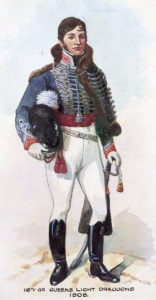
Officer of 16th Light Dragoons: Battle of Villagarcia on 11th April 1812 in the Peninsular War: picture by Richard Simkin
Light Cavalry Brigade: Lieutenant Colonel William Ponsonby (during the leave in England of General Anson)
12th Light Dragoons
14th Light Dragoons
16th Light Dragoons
French Cavalry:
2nd Hussars
17th Dragoons
27th Dragoons
Background to the Battle of Villagarcia: Following the British capture of the city of Badajoz, on 6th April 1812, Wellington intended the French to believe that he planned an attack on Marshal Soult’s troops in the south of Spain, while his purpose was, in fact, to march his troops north against Marshal Marmont’s ‘Army of Portugal’.
As part of Wellington’s deception, General Cotton’s British First Cavalry Division advanced on Llerena, to the south-east of Badajoz, where General D’Erlon’s two divisions were about to retreat to the south.
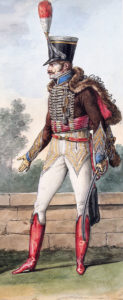
Officer of the French 2nd Hussars: Battle of Villagarcia on 11th April 1812 in the Peninsular War: picture by Vernet
Account of the Battle of Villagarcia:
On 10th April 1812, Cotton’s cavalry division was positioned with Slade’s heavy cavalry brigade at Villafranca, Le Marchant’s heavy cavalry brigade at Los Santos and Ponsonby’s light cavalry brigade at Ribera.
Cotton rode forward to Bienvenida, where it is said that he observed from the church steeple that a strong force of French cavalry was encamped in a wood at Villagarcia, halfway between Bienvenida and Llerena, 7 miles to the north-west of Llerena.
It seems more likely that the information came from local Spanish.
Cotton, intending to attack this body of French cavalry, ordered his three brigades to move forward; Ponsonby to advance with the 12th and 14th Light Dragoons to Usagre and all the regiments of the division to assemble by dawn the next day at Bienvenida.
Later, on 10th April 1812, Cotton was informed that the French cavalry had left Villagarcia.
Cotton ordered Ponsonby immediately to send two squadrons into Villagarcia and to look for the French cavalry on the road towards Cordoba.
At dawn on 11th April 1812, the two heavy cavalry brigades and the 16th Light Dragoons assembled at Bienvenida.
Cotton received further information that the French cavalry were still in the area of Villagarcia.
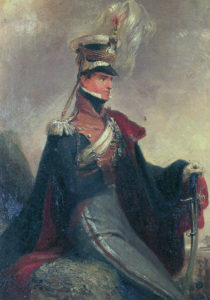
Lieutenant Colonel Bathurst Hervey, commanding 14th Light Dragoons at the Battle of Villagarcia on 11th April 1812 in the Peninsular War
Cotton realised that if Ponsonby advanced as ordered, the French would be likely to fall back, whereas if the French stayed where they were, the British heavy cavalry could attack them in the flank or rear and possibly capture the whole French force.
Cotton sent orders to Ponsonby to hold back and await further directions, but Ponsonby had already advanced and attacked the French picquets.
Ponsonby’s two regiments drove the French picquets through Villagarcia and came upon Lallemand’s main body of French cavalry, formed up in the open country to the south-east of the town.
Unaware of the additional British cavalry regiments coming up on his flank, Lallemand advanced to attack Ponsonby’s regiments to his front. The French force comprised some 1,200 troopers, while Ponsonby’s three regiments numbered around 600.
Cotton rode up and took command.
The only two additional British regiments to arrive on the field in time for the battle were the 16th Light Dragoons, followed by the 5th Dragoon Guards.
Le Marchant’s brigade, leading Slade’s brigade, had travelled nearly 60 miles in its march to Bienvenida and on to Villagarcia, his regiments strung out in column. General Le Marchant accompanied the leading regiment, the 5th Dragoon Guards.
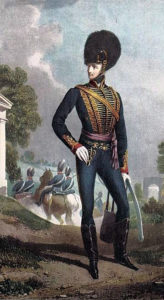
Major General John Gaspard le Marchant: Battle of Villagarcia on 11th April 1812 in the Peninsular War
Cotton ordered Ponsonby to advance with the 12th and 14th Light Dragoons, while the third regiment, the 16th Light Dragons, came up on his right.
Le Marchant led the 5th Dragoon Guards across a ravine and into an olive grove. From there, the 5th delivered a charge, its squadrons forming line on the move, against the left flank of Lallemand’s cavalry.
The British 16th Light Dragoons jumped a stone wall in ranks and charged on the left of the 5th Dragoon Guards.
The French cavalry received the 5th Dragoon Guards’ and 16th Light Dragoons’ charges with carbine and pistol fire from the saddle, failing to have any effect in halting the British attack. The French cavalry broke and fled, pursued by the three light dragoon regiments and the 5th Dragoon Guards.
After some two miles of pursuit down the road to Llerena, Cotton halted his regiments to restore them to an orderly formation.
Lallemand took this opportunity to rally his troopers, forming them up behind a wide ditch.
Cotton sent two squadrons of the 16th Light Dragoons to take the French in their left flank, while ordering the 12th Light Dragoons to make a frontal charge on Lallemand’s men.
The French were again put to flight along the road to Llerena.
Closely pursuing the French regiments to Llerena, the British cavalry found the rest of D’Erlon’s division of infantry and artillery drawn up, ready to receive them. Cotton abandoned the pursuit and retired, flushed with his success.
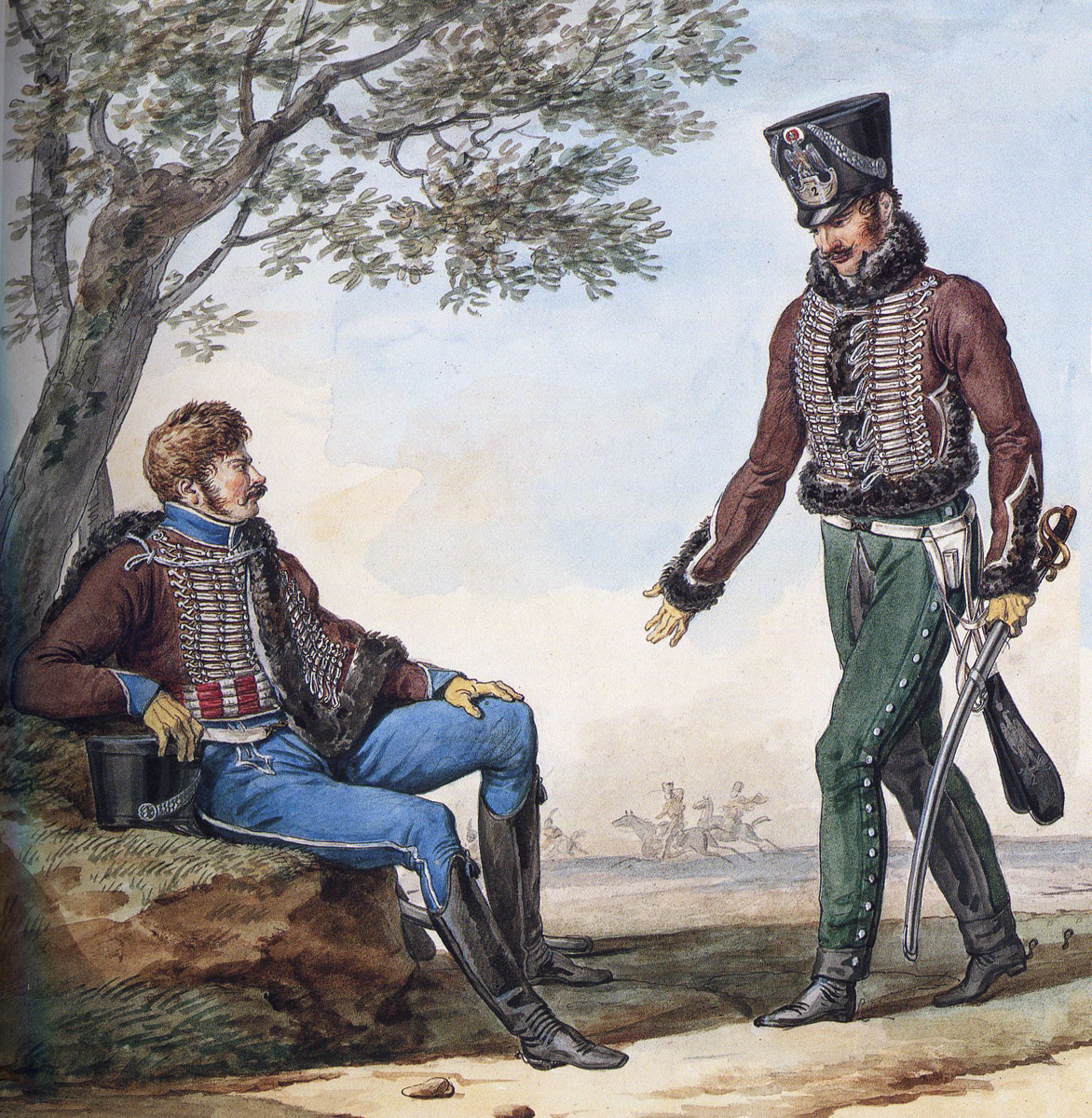
French 2nd Hussars: Battle of Villagarcia on 11th April 1812 in the Peninsular War: picture by Vernet
Casualties at the Battle of Villagarcia:
The British captured 4 officers and 125 soldiers from the French cavalry force, including a lieutenant colonel from the French 17th Dragoons.
Fortescue estimates the total French casualties at around 200 killed, wounded and captured.
The British also captured a French poodle that came out looking for his dead master.
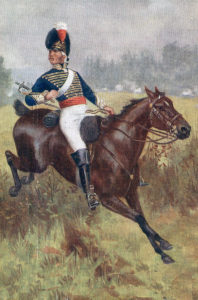
British Light Dragoon in pre-1812 uniform: Battle of Villagarcia on 11th April 1812 in the Peninsular War
The British 5th Dragoon Guards suffered 14 soldiers and 2 officers (including Major Sergentson Prescott, commanding the regiment in the absence of Ponsonby) killed and 35 wounded.
The three light dragoon regiments suffered a further 18 casualties.
Follow-up to the Battle of Villagarcia:
Following the battle, D’Erlon continued his retreat to the south.
A consequence of the battle was that Marshal Soult was reinforced in his belief that Wellington intended an incursion into Andalusia, his fiefdom in the south of Spain, making him the more determined to ignore King Joseph’s directions to send a substantial proportion of his troops to reinforce Marmont’s Army of Portugal, the French army facing Wellington’s actual attack into Spain
Anecdotes and traditions from the Battle of Villagarcia:
- Fortescue refers to the Battle of Villagarcia as ‘Bienvenida’. The battle is also known as the Battle of Llerena.
- General Lallemand was an ardent supporter of the Emperor Napoleon and, in 1815, was key in causing the French army to abandon the Bourbons and resume its allegiance to Napoleon, on his return from Elba. After Waterloo, facing execution by firing squad at the hands of the Bourbons, Lallemand attempted to join Napoleon in exile on St Helena, but was rebuffed by the British. Along with other Bonapartists, following Napoleon’s brother Joseph, Lallemand sailed to the United States of America, where he led an unsuccessful attempt to establish a Bonapartist colony in Texas in 1819, to be called Aigleville. Lallemand finally returned to France.
- John Gaspard Le Marchant, commander of one of Cotton’s heavy cavalry brigades, was considered one of the few competent British cavalry commanders. Le Marchant was killed, leading his brigade, at the Battle of Salamanca.
- Although the Battle of Villagarcia was a success, Cotton considered that the whole French cavalry force should have been captured. Cotton blamed Ponsonby for this failure.
- Cotton commended Lieutenant Colonel Bathurst Hervey, the commanding officer of the 14th Light Dragoons, for his frontal charge against the French cavalry, across the ditch.
References for the Battle of Villagarcia:
See the extensive list of references given at the end of the Peninsular War Index.
Scientific Soldier: a life of General Le Marchant 1766-1812 by R.H. Thomine (this book contains a lively and detailed account of the Battle of Villagarcia)
Diary of a Cavalry Officer by William Tomkinson (who fought with the 16th Light Dragoons at the Battle of Villagarcia)
The previous battle in the Peninsular War is the Storming of Badajoz
The next battle in the Peninsular War is The next battle in the Peninsular War is the Battle of Almaraz
30. Podcast of the Battle of Villagarcia The successful cavalry action fought by the British against the French on 11th April 1812 during the Peninsular War: John Mackenzie’s britishbattles.com
